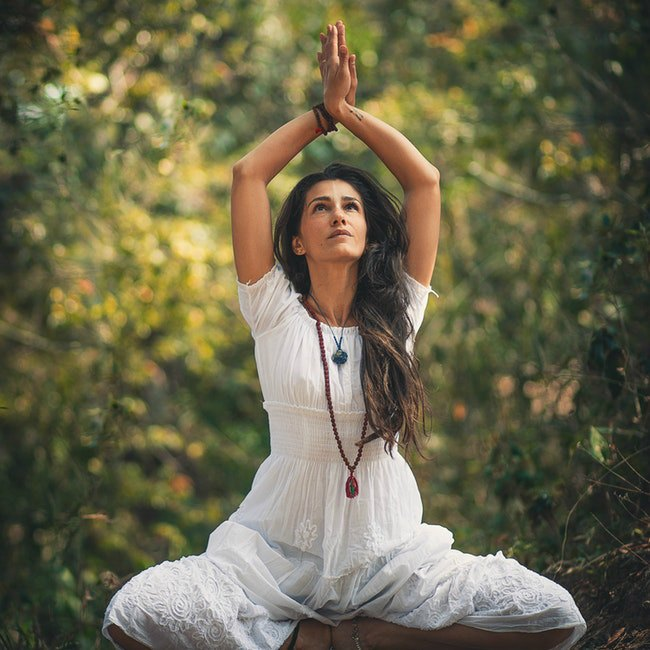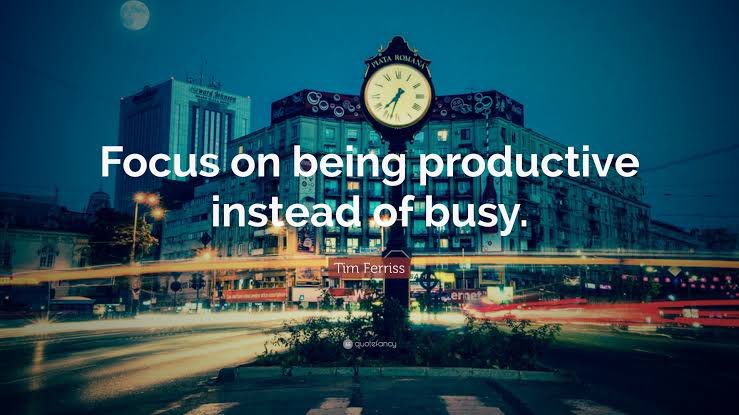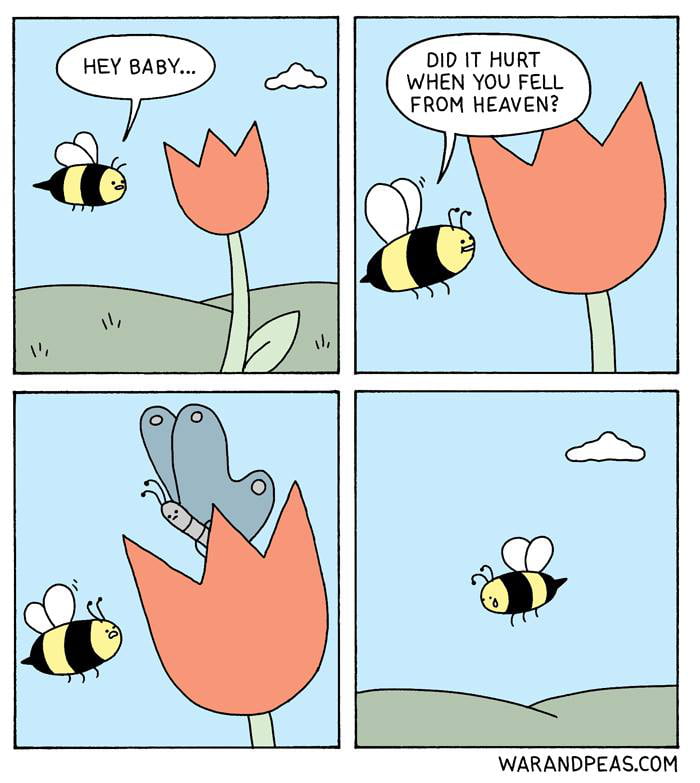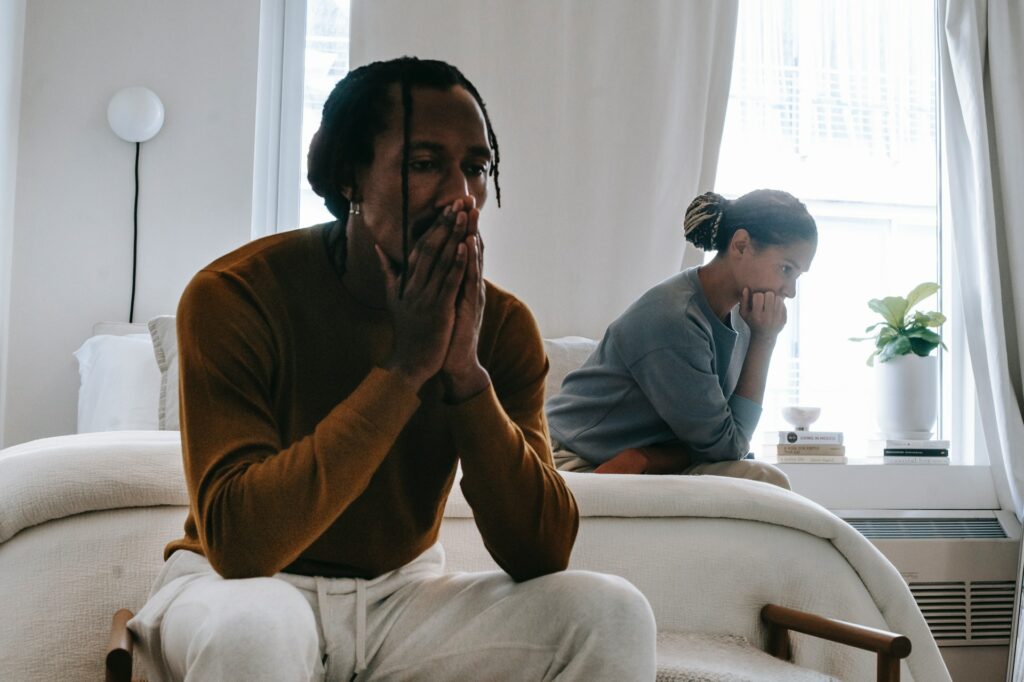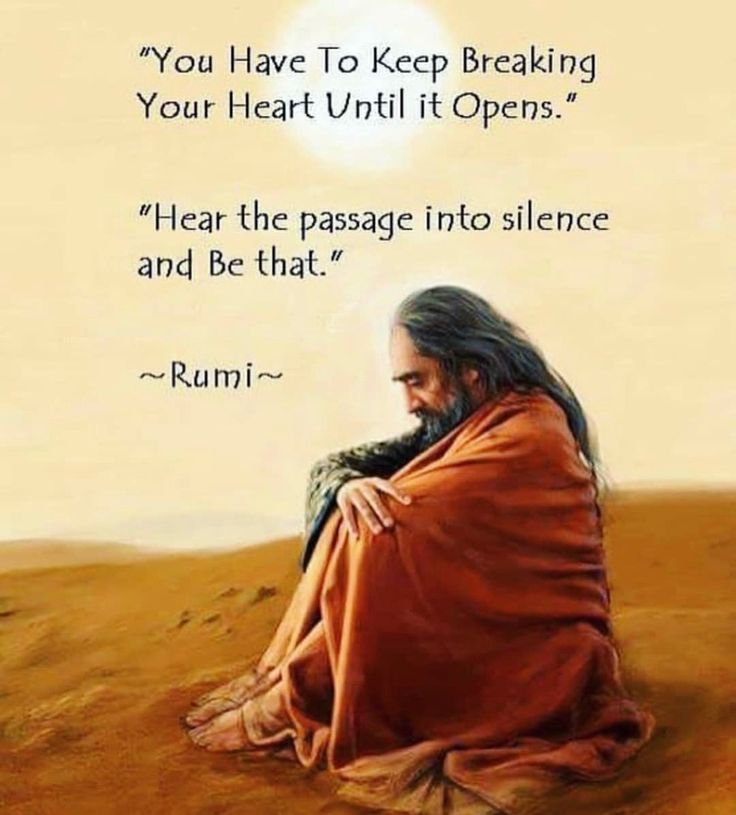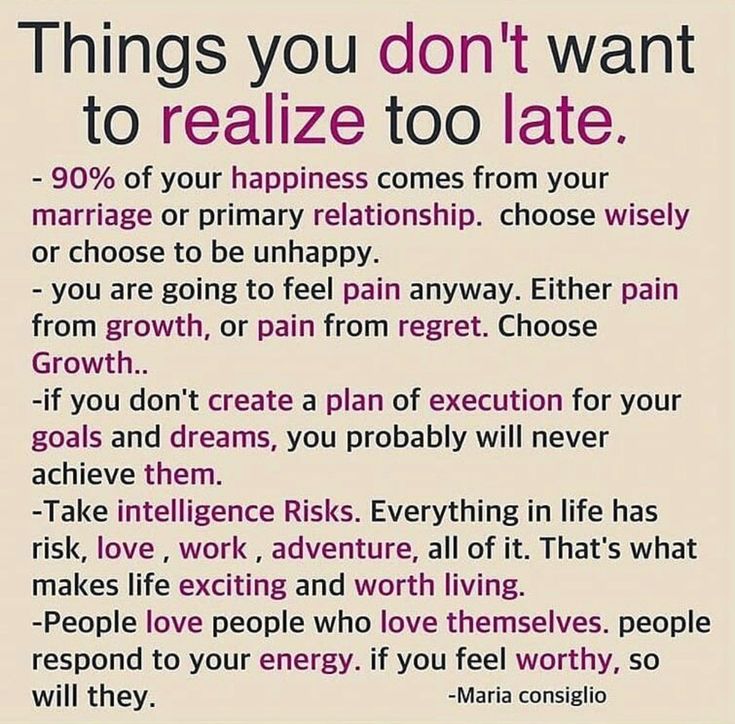What is kundalini meditation
Benefits, How To Try, and Dangers
“Kundalini” is a Sanskrit term meaning “coiled,” and it refers to a specific type of meditation that’s believed to have the ability to fully awaken your potential for awareness.
According to the theory behind Kundalini meditation, life energy lies at the base of your spine (root chakra), coiled like a snake — and that’s where its name comes from.
In Kundalini meditation, you can work to awaken this energy and achieve enlightenment through a combination of techniques, including:
- deep breathing
- mudras (hand movements)
- mantras (phrases)
- physical movements
These exercises are said to rouse dormant energy in your body and move it along your chakras (energy centers) until it reaches the point of release at the seventh (crown) chakra, your head.
This release of energy promotes internal balance, awakening, and enlightenment.
Kundalini practices are at least a few thousand years old, though scholars don’t have an exact date of origin.
Origins
Kundalini teachings first appeared in The Upanishads, a collection of Hindu religious texts. Estimates suggest composition of these sacred writings began somewhere around 800 to 500 B.C.
This is the first known record of Kundalini meditation, but it’s widely believed oral descriptions of Kundalini meditation and yoga predate these written ones.
In its early stages, Kundalini was a private philosophy. Only students who had spent years studying meditation and spirituality were given the opportunity to learn from Kundalini teachers.
Even when Kundalini evolved from meditative teachings to include physical practices (yoga), it remained unknown outside of these select teachers and students.
This was the case for thousands of years, until Yogi Bhajan began teaching Kundalini yoga, which involves Kundalini meditation, in the United States.
Introduction in the West
In 1968, Yogi Bhajan ended the secrecy around Kundalini by introducing Kundalini yoga — of which Kundalini meditation is a big component — to the Western world.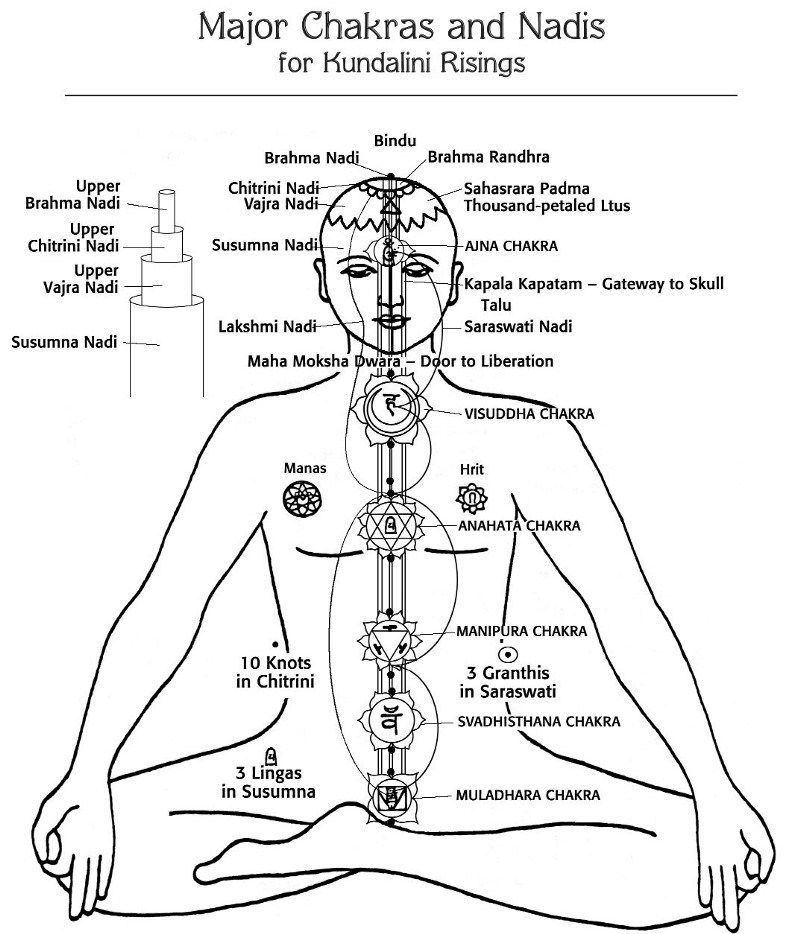
He believed this would help people see improvements to their life and overall well-being by giving them the opportunity to experience a different type of consciousness.
Over a period of more than 30 years, he taught thousands of meditation and yoga techniques and founded the Kundalini Research Institute, where he trained other students to become teachers of the practice.
In the newsIn 2020, several people who’d previously practiced under Bhajan or worked closely with him came forward with allegations of sexual, physical, and emotional abuse against him. While many practitioners still believe in the benefits of Kundalini yoga, there are questions about what the future of Kundalini yoga should look like.
People who practice Kundalini meditation report experiencing a range of benefits. These include:
- increased mindfulness and compassion
- improved communication with self and others
- inspiration
- a clear mind
- a more developed sense of self
- greater purpose and intent in your actions
Some of these benefits are supported by research that looked at Kundalini yoga, which typically involves Kundalini meditation:
- Reduced stress.
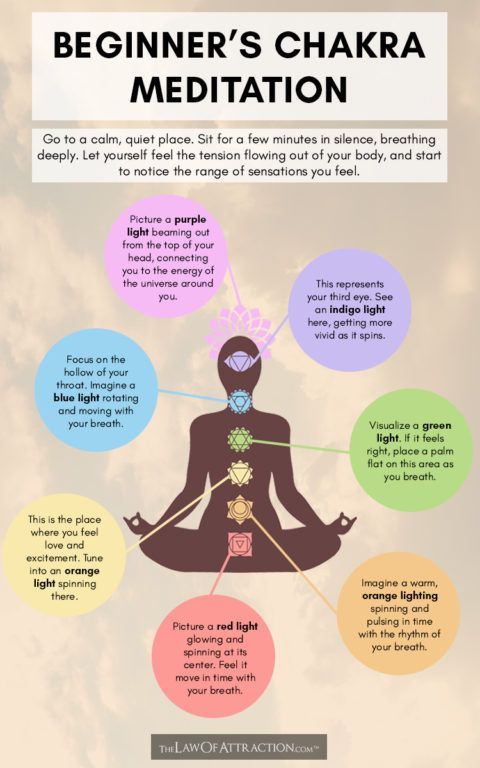 A small study in 2017 suggests that Kundalini yoga may offer immediate stress relief. The authors add that Kundalini meditation might be helpful for conditions linked to high stress, including cardiovascular disease and insomnia.
A small study in 2017 suggests that Kundalini yoga may offer immediate stress relief. The authors add that Kundalini meditation might be helpful for conditions linked to high stress, including cardiovascular disease and insomnia. - Reduced anxiety. A 2018 study suggests that Kundalini yoga may reduce symptoms of generalized anxiety disorder.
- Improved cognitive function. A 2017 study compared Kundalini yoga and memory enhancement training as potential treatments for cognitive impairment in 81 older adults. Results suggest that while both interventions appeared to help improve memory, Kundalini yoga seemed to help improve executive functioning as well.
With thousands of techniques to choose from, Kundalini meditation can get a bit complicated. If you’d like to use it to address a certain concern, a teacher can offer guidance on specific techniques.
Kundalini meditation is a comprehensive approach, so if you’re new to meditation, it may help to try it first with a practitioner or follow along with a guided meditation.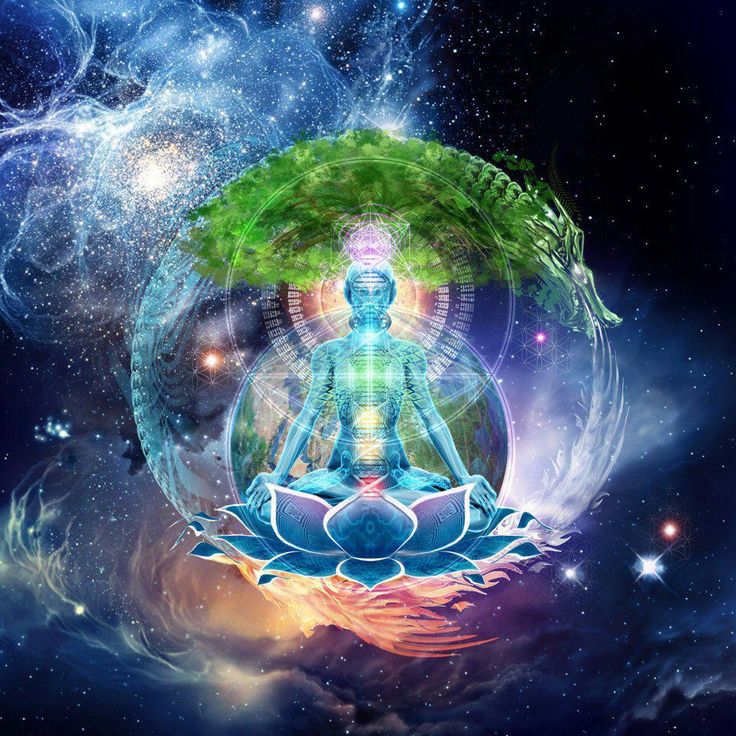
Still, you can try the basics on your own:
- Dress for comfort. Wearing light, loose clothing can help you feel most comfortable while you meditate. Kundalini practitioners often use shawls or other cloth to cover their heads, since this is believed to protect and promote energy flow.
- Begin by tuning in to get into a meditative frame of mind. Sit upright in your chair or on the floor, keeping your spine straight. Position your hands in a prayer pose by pressing your palms together at your chest. Close your eyes but not completely — let in just a crack of light.
- Focus on the third eye chakra. Many practitioners find it helps to focus on their third eye while tuning in. Keeping your eyes closed, turn your gaze to the space in the center of your forehead between your eyebrows.
-
Use a mantra. Mantras, which help direct your focus, are an important component of Kundalini meditation. It typically involves mantras in Gurmukhi, a sacred Indian language.
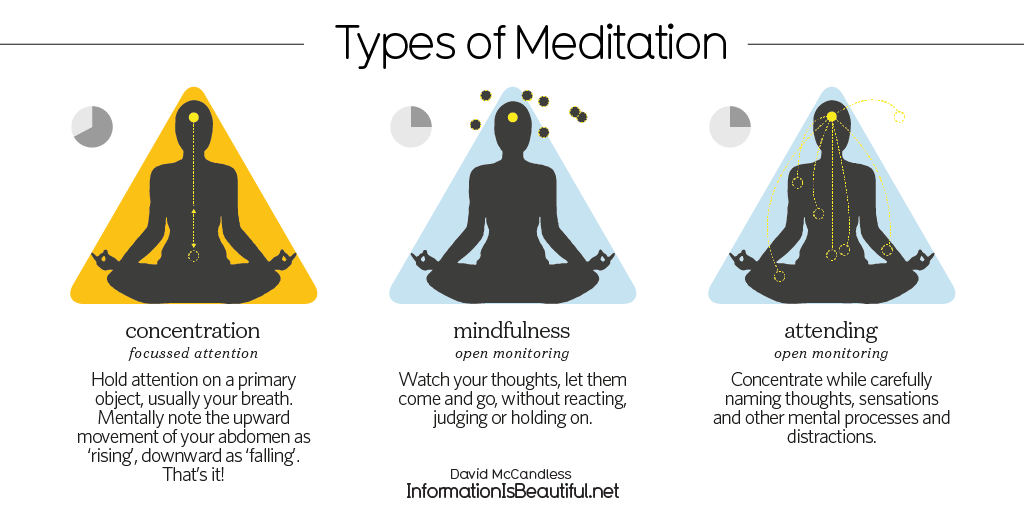 But don’t worry too much about choosing the right mantra on your first try. You’ll likely see the best results with a mantra that feels right to you. Say it aloud or repeat it silently, whatever works best for you.
But don’t worry too much about choosing the right mantra on your first try. You’ll likely see the best results with a mantra that feels right to you. Say it aloud or repeat it silently, whatever works best for you. - Begin focusing on your breath. Inhale and exhale through your nose only, focusing on the sensation of breathing. Then, begin to slow your breath. Each inhale and exhale should last 3 to 4 seconds, so each breath should last about 8 seconds. Pay attention to how your breath flows through and energizes your body.
- Add mudras. Kundalini techniques typically involve the use of mudras, or hand positions. For example, if you want to promote wisdom, openness, and calm, try the Gyan mudra by touching your first finger to your thumb. To promote patience and commitment, try the Shuni mudra by touching your middle finger to your thumb.
- Divide your breathing into equal segments. Instead of taking one long inhale for 4 seconds followed by a long exhale, divide each inhale and exhale into four parts.
 In other words, breathe in 4 times, without exhaling in between. Then breathe out in the same way. With each inhale and exhale, draw your navel (belly button) toward your spine.
In other words, breathe in 4 times, without exhaling in between. Then breathe out in the same way. With each inhale and exhale, draw your navel (belly button) toward your spine. - Return your attention to your breath when it wanders. Even long-term meditators don’t stay focused all the time. Whenever you notice a loss of focus, turn your thoughts back to your breath. If any wandering thoughts come up, acknowledge them and then let them drift away.
- Continue for 3 to 5 minutes. If you’re new to meditation, there’s no need to jump right into a lengthy practice. It’s generally recommended to start with a shorter session and increase the length of your meditation as you get more comfortable.
- End your session. Complete your meditation with a deep complete breath (inhale and exhale). Breathe in once again as you raise your arms to their full length. Relax as you breathe out.
Meditation beginner? These tips can help make any meditation practice more successful.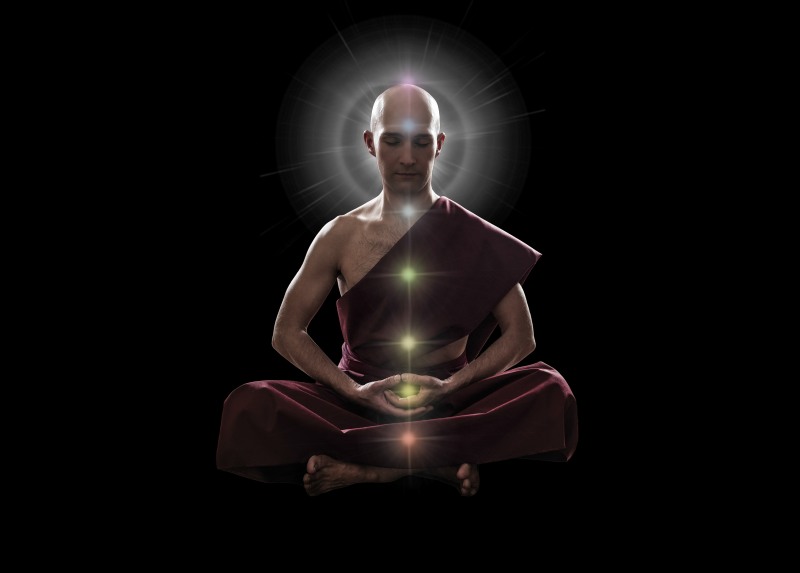
People often practice Kundalini meditation specifically to experience the release of energy known as a Kundalini awakening. Many people find this somewhat of a spiritual experience, but it might sound a little overwhelming if you don’t know what to expect.
During a Kundalini awakening, people report physical sensations, such as warmth or tingling, disorientation, and some temporary discomfort.
If a person isn’t fully prepared for the experience, some people claim they may experience long-term negative effects. While meditation can certainly be a powerful experience, there’s no evidence to support such long-term negative effects.
All that aside, Kundalini meditation does involve deep breathing exercises and slowed breathing. If you aren’t used to this, you may feel dizzy or lightheaded.
Take breaks when you need to, and drink plenty of water before and after meditation.
Kundalini meditation can have benefits, even when it doesn’t lead to a full-blown awakening.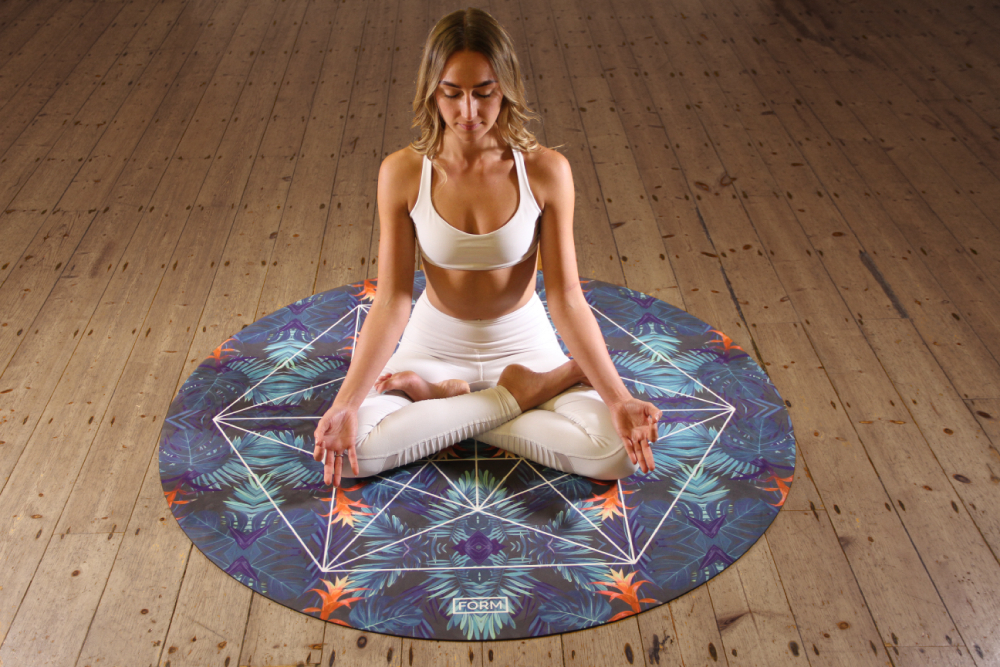 In fact, some practitioners consider it one of the most powerful forms of meditation.
In fact, some practitioners consider it one of the most powerful forms of meditation.
You may notice some improvements in wellness right away, but patience and dedicated practice can help you achieve the most benefits.
Crystal Raypole has previously worked as a writer and editor for GoodTherapy. Her fields of interest include Asian languages and literature, Japanese translation, cooking, natural sciences, sex positivity, and mental health. In particular, she’s committed to helping decrease stigma around mental health issues.
Benefits, How To Try, and Dangers
“Kundalini” is a Sanskrit term meaning “coiled,” and it refers to a specific type of meditation that’s believed to have the ability to fully awaken your potential for awareness.
According to the theory behind Kundalini meditation, life energy lies at the base of your spine (root chakra), coiled like a snake — and that’s where its name comes from.
In Kundalini meditation, you can work to awaken this energy and achieve enlightenment through a combination of techniques, including:
- deep breathing
- mudras (hand movements)
- mantras (phrases)
- physical movements
These exercises are said to rouse dormant energy in your body and move it along your chakras (energy centers) until it reaches the point of release at the seventh (crown) chakra, your head.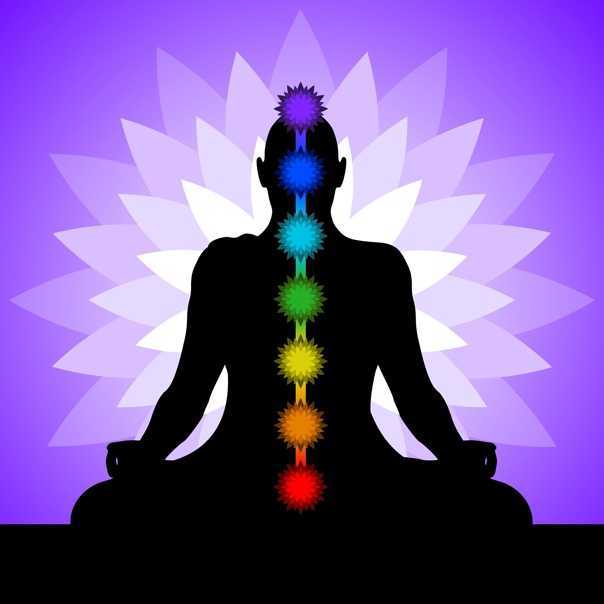
This release of energy promotes internal balance, awakening, and enlightenment.
Kundalini practices are at least a few thousand years old, though scholars don’t have an exact date of origin.
Origins
Kundalini teachings first appeared in The Upanishads, a collection of Hindu religious texts. Estimates suggest composition of these sacred writings began somewhere around 800 to 500 B.C.
This is the first known record of Kundalini meditation, but it’s widely believed oral descriptions of Kundalini meditation and yoga predate these written ones.
In its early stages, Kundalini was a private philosophy. Only students who had spent years studying meditation and spirituality were given the opportunity to learn from Kundalini teachers.
Even when Kundalini evolved from meditative teachings to include physical practices (yoga), it remained unknown outside of these select teachers and students.
This was the case for thousands of years, until Yogi Bhajan began teaching Kundalini yoga, which involves Kundalini meditation, in the United States.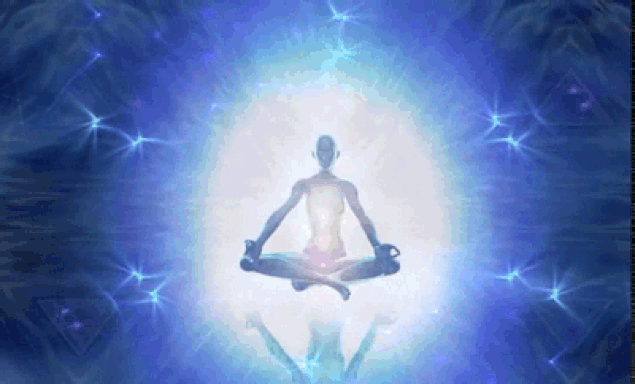
Introduction in the West
In 1968, Yogi Bhajan ended the secrecy around Kundalini by introducing Kundalini yoga — of which Kundalini meditation is a big component — to the Western world.
He believed this would help people see improvements to their life and overall well-being by giving them the opportunity to experience a different type of consciousness.
Over a period of more than 30 years, he taught thousands of meditation and yoga techniques and founded the Kundalini Research Institute, where he trained other students to become teachers of the practice.
In the newsIn 2020, several people who’d previously practiced under Bhajan or worked closely with him came forward with allegations of sexual, physical, and emotional abuse against him. While many practitioners still believe in the benefits of Kundalini yoga, there are questions about what the future of Kundalini yoga should look like.
People who practice Kundalini meditation report experiencing a range of benefits.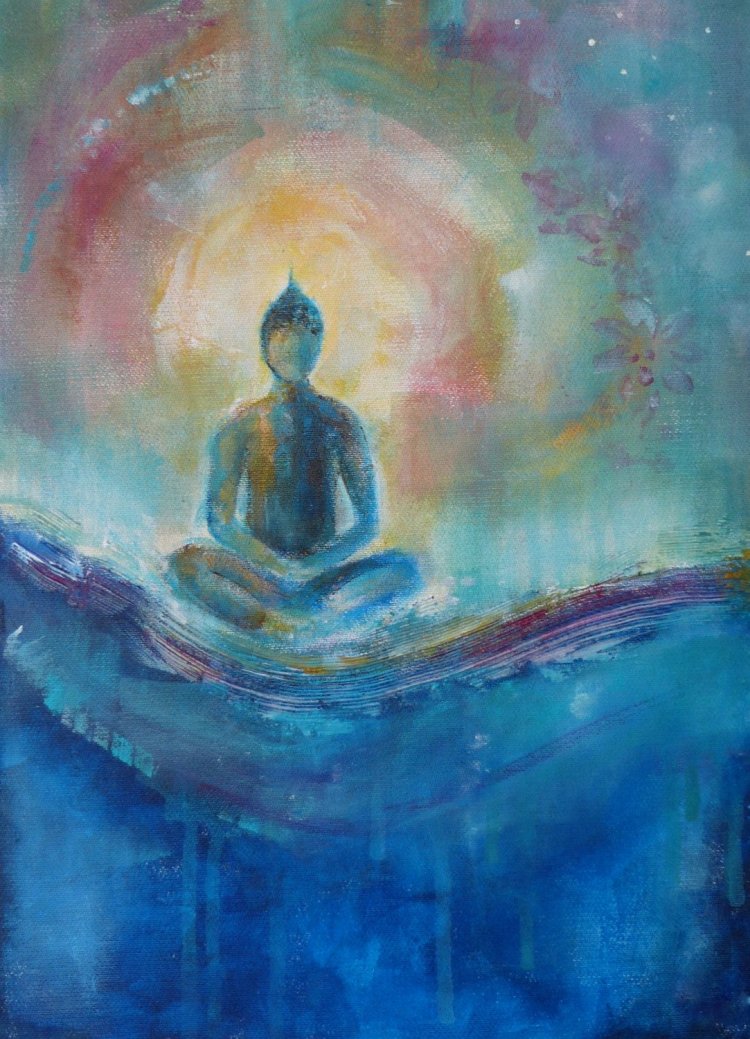 These include:
These include:
- increased mindfulness and compassion
- improved communication with self and others
- inspiration
- a clear mind
- a more developed sense of self
- greater purpose and intent in your actions
Some of these benefits are supported by research that looked at Kundalini yoga, which typically involves Kundalini meditation:
- Reduced stress. A small study in 2017 suggests that Kundalini yoga may offer immediate stress relief. The authors add that Kundalini meditation might be helpful for conditions linked to high stress, including cardiovascular disease and insomnia.
- Reduced anxiety. A 2018 study suggests that Kundalini yoga may reduce symptoms of generalized anxiety disorder.
- Improved cognitive function. A 2017 study compared Kundalini yoga and memory enhancement training as potential treatments for cognitive impairment in 81 older adults. Results suggest that while both interventions appeared to help improve memory, Kundalini yoga seemed to help improve executive functioning as well.
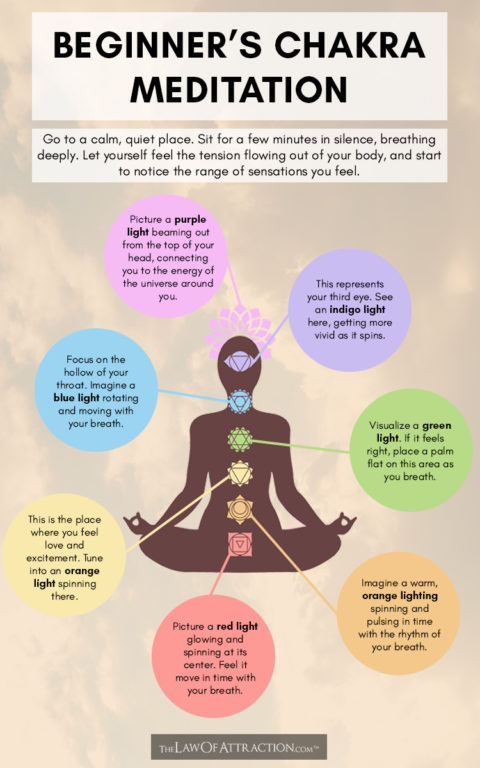
With thousands of techniques to choose from, Kundalini meditation can get a bit complicated. If you’d like to use it to address a certain concern, a teacher can offer guidance on specific techniques.
Kundalini meditation is a comprehensive approach, so if you’re new to meditation, it may help to try it first with a practitioner or follow along with a guided meditation.
Still, you can try the basics on your own:
- Dress for comfort. Wearing light, loose clothing can help you feel most comfortable while you meditate. Kundalini practitioners often use shawls or other cloth to cover their heads, since this is believed to protect and promote energy flow.
- Begin by tuning in to get into a meditative frame of mind. Sit upright in your chair or on the floor, keeping your spine straight. Position your hands in a prayer pose by pressing your palms together at your chest. Close your eyes but not completely — let in just a crack of light.
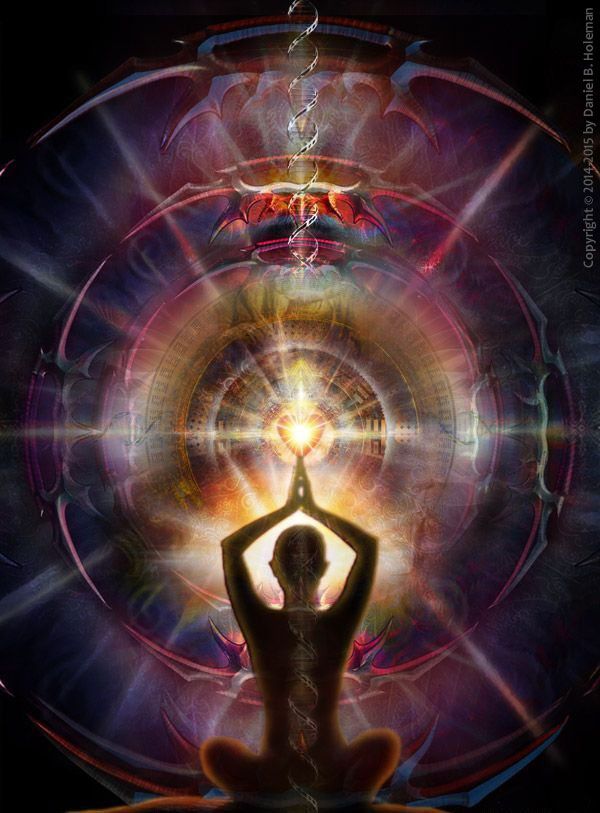
- Focus on the third eye chakra. Many practitioners find it helps to focus on their third eye while tuning in. Keeping your eyes closed, turn your gaze to the space in the center of your forehead between your eyebrows.
- Use a mantra. Mantras, which help direct your focus, are an important component of Kundalini meditation. It typically involves mantras in Gurmukhi, a sacred Indian language. But don’t worry too much about choosing the right mantra on your first try. You’ll likely see the best results with a mantra that feels right to you. Say it aloud or repeat it silently, whatever works best for you.
- Begin focusing on your breath. Inhale and exhale through your nose only, focusing on the sensation of breathing. Then, begin to slow your breath. Each inhale and exhale should last 3 to 4 seconds, so each breath should last about 8 seconds. Pay attention to how your breath flows through and energizes your body.
- Add mudras.
 Kundalini techniques typically involve the use of mudras, or hand positions. For example, if you want to promote wisdom, openness, and calm, try the Gyan mudra by touching your first finger to your thumb. To promote patience and commitment, try the Shuni mudra by touching your middle finger to your thumb.
Kundalini techniques typically involve the use of mudras, or hand positions. For example, if you want to promote wisdom, openness, and calm, try the Gyan mudra by touching your first finger to your thumb. To promote patience and commitment, try the Shuni mudra by touching your middle finger to your thumb. - Divide your breathing into equal segments. Instead of taking one long inhale for 4 seconds followed by a long exhale, divide each inhale and exhale into four parts. In other words, breathe in 4 times, without exhaling in between. Then breathe out in the same way. With each inhale and exhale, draw your navel (belly button) toward your spine.
- Return your attention to your breath when it wanders. Even long-term meditators don’t stay focused all the time. Whenever you notice a loss of focus, turn your thoughts back to your breath. If any wandering thoughts come up, acknowledge them and then let them drift away.
- Continue for 3 to 5 minutes.
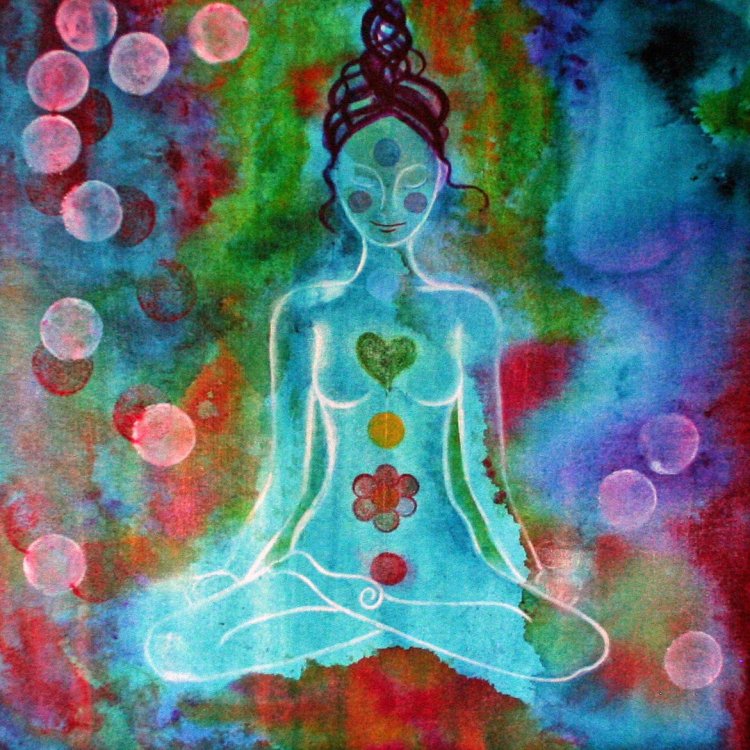 If you’re new to meditation, there’s no need to jump right into a lengthy practice. It’s generally recommended to start with a shorter session and increase the length of your meditation as you get more comfortable.
If you’re new to meditation, there’s no need to jump right into a lengthy practice. It’s generally recommended to start with a shorter session and increase the length of your meditation as you get more comfortable. - End your session. Complete your meditation with a deep complete breath (inhale and exhale). Breathe in once again as you raise your arms to their full length. Relax as you breathe out.
Meditation beginner? These tips can help make any meditation practice more successful.
People often practice Kundalini meditation specifically to experience the release of energy known as a Kundalini awakening. Many people find this somewhat of a spiritual experience, but it might sound a little overwhelming if you don’t know what to expect.
During a Kundalini awakening, people report physical sensations, such as warmth or tingling, disorientation, and some temporary discomfort.
If a person isn’t fully prepared for the experience, some people claim they may experience long-term negative effects.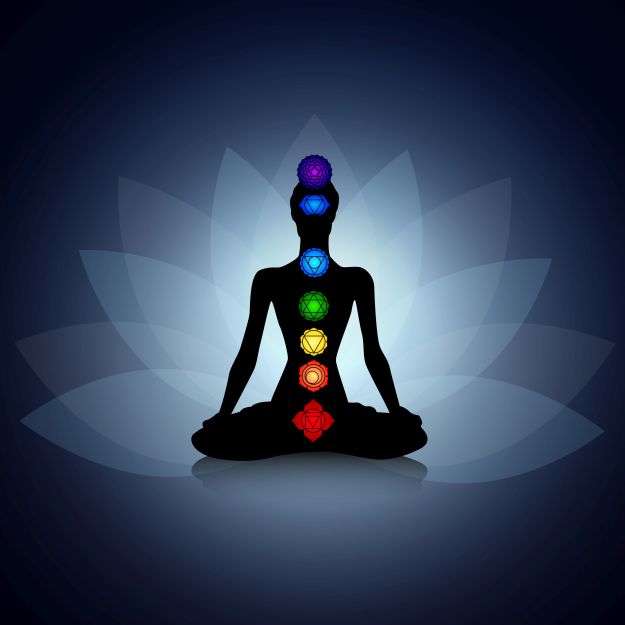 While meditation can certainly be a powerful experience, there’s no evidence to support such long-term negative effects.
While meditation can certainly be a powerful experience, there’s no evidence to support such long-term negative effects.
All that aside, Kundalini meditation does involve deep breathing exercises and slowed breathing. If you aren’t used to this, you may feel dizzy or lightheaded.
Take breaks when you need to, and drink plenty of water before and after meditation.
Kundalini meditation can have benefits, even when it doesn’t lead to a full-blown awakening. In fact, some practitioners consider it one of the most powerful forms of meditation.
You may notice some improvements in wellness right away, but patience and dedicated practice can help you achieve the most benefits.
Crystal Raypole has previously worked as a writer and editor for GoodTherapy. Her fields of interest include Asian languages and literature, Japanese translation, cooking, natural sciences, sex positivity, and mental health. In particular, she’s committed to helping decrease stigma around mental health issues.
kundalini meditation. Osho Meditations - Path of Meditation
Osho Meditations in a Group »
Kundalini meditation has four stages. The duration of the meditation is 60 minutes.
Immersion in shaking in the first stage will help remove internal blocks that interfere with the proper flow of energy. The second and third stages of meditation will allow you to transform energy into joy and bliss. Kundalini meditation is the best way to end your day right!
Stage 1 Kundalini Meditation - 15 minutes
Relax and let your body shake as you feel the energies moving from your feet. Let it spread all over and become that shaking. Your eyes can be either open or closed.
Stage 2 Kundalini Meditation - 15 minutes
Dance in any way and let the whole body move as it wants.
Stage 3 Kundalini Meditation - 15 minutes
Close your eyes and be still, sitting or standing, witnessing whatever is happening outside or inside.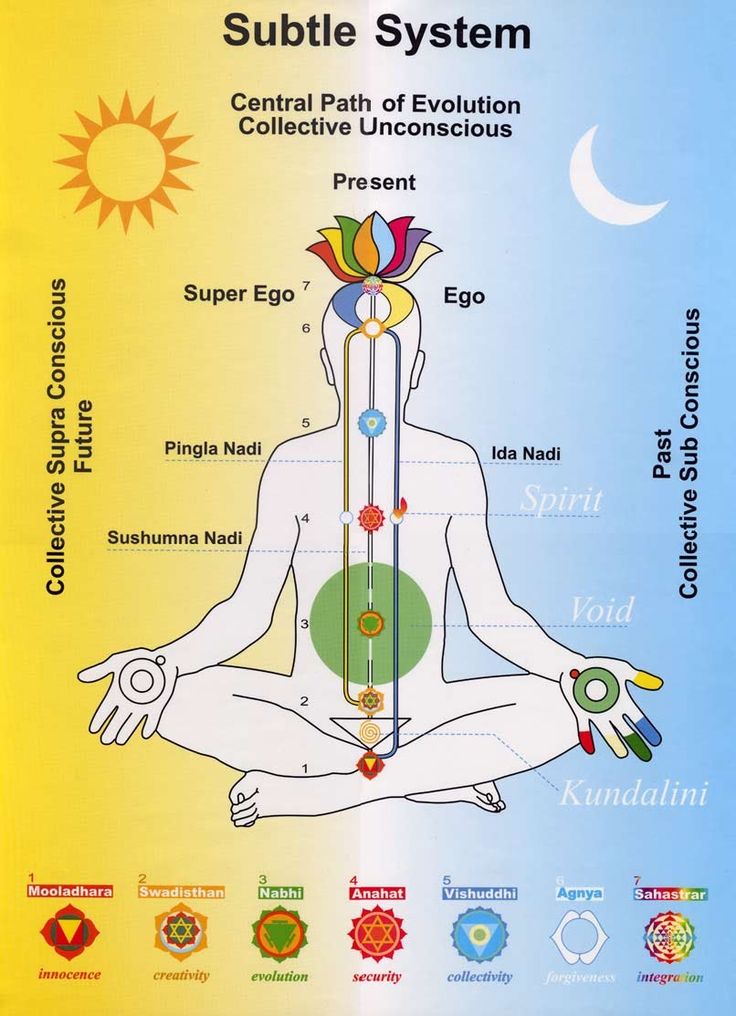
4th stage of Kundalini meditation - 15 minutes
Keeping your eyes closed, lie down and be still.
If you are doing Kundalini Meditation, let the shaking be, don't do it! Stand still, feel it coming, and when your body starts shaking, help the shaking, but don't do it. Enjoy it, feel bliss from it, allow it, accept it, welcome it, but don't impose it.
If you make an effort, it becomes an exercise - bodily, physical exercise. In this case, there will be shaking, but it will be superficial. She will not penetrate you. Inside you will remain as hard as a stone, as a rock. You will remain a manipulator, you will do, and the body will simply obey. But it's not about the body - it's about you.
When I say "shaking," I mean that your hardness, your stone-like being, must shake to its very foundations: become liquid, fluid, melt, flow. And when your solid being becomes fluid, your body will follow.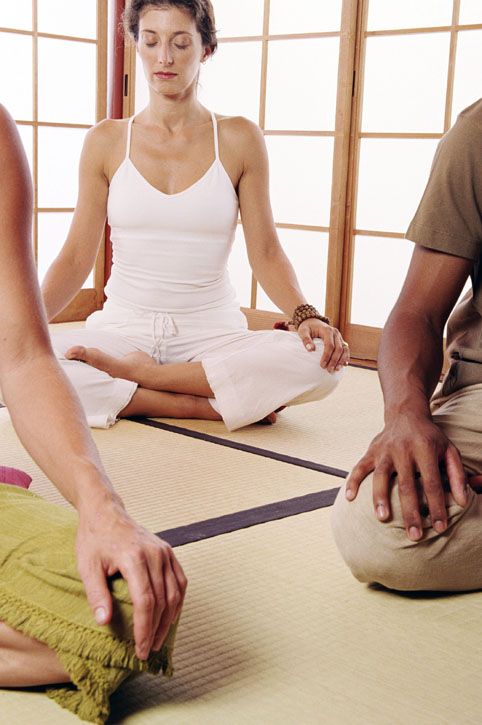 And then there will be no one who is shaking, only shaking will remain. Then nobody does it, it just happens. Then there is no doer.
And then there will be no one who is shaking, only shaking will remain. Then nobody does it, it just happens. Then there is no doer.
Enjoy it, but don't force it. And remember, if you force something, you cannot enjoy it. These are two sides of the coin, opposites, they never meet. If you force something you cannot enjoy it, if you enjoy it you cannot force it.
Chaotic meditation or Kundalini or Nadabrahma is not really meditation. You're just getting in tune. It's as if you've seen Indian classical musicians play. For half an hour or an hour, sometimes even more, they just tune their instruments. They turn the knobs, tighten or loosen the strings, and the drummer checks his drum whether it is ready or not.
They do this for half an hour. It's not music, it's cooking. Kundalini is not really meditation, it is just preparation. You are preparing your instrument. When you are ready, then stand in silence, then meditation begins. Then you are completely in it. You have awakened yourself by jumping, dancing, screaming - these are all ways to make you a little more alert than usual.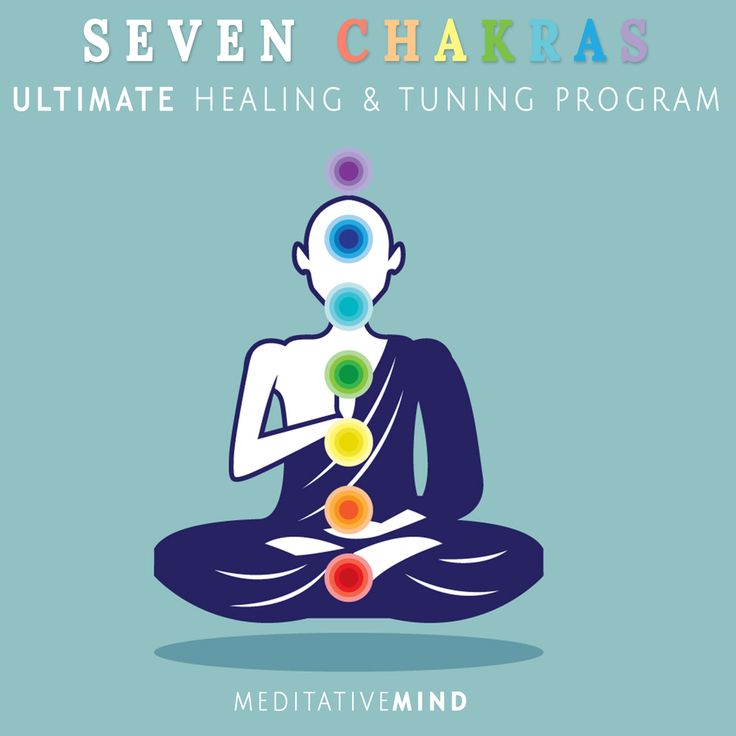 Since you are vigilant - wait! Waiting is meditation. Waiting with full awareness.
Since you are vigilant - wait! Waiting is meditation. Waiting with full awareness.
Osho Kundalini Meditation - A site about constellations, Osho rebalancing and Ericksonian trances
- Osho Kundalini Meditation
- The first stage - "shaking"
- The second stage is the "dance"
- The third stage is “seated observation”
- Fourth stage - "Lying observation"
- A few notes
Fragment of Chapter 24 from the book “Body, Energy, Emotions. Transformation through touch”
Osho Kundalini Meditation
The meditation technique Osho Kundalini can be called the “evening sister” of Osho Dynamic Meditation . Among Osho sannyasins, these two techniques are considered the most important of the entire meditation heritage of the Master. And if every morning at our training necessarily began with "Dynamics", then absolutely with the same inevitability every training day ended with meditation Osho Kundalini - exactly the same as it is still accepted in Pune.
Among Osho sannyasins, these two techniques are considered the most important of the entire meditation heritage of the Master. And if every morning at our training necessarily began with "Dynamics", then absolutely with the same inevitability every training day ended with meditation Osho Kundalini - exactly the same as it is still accepted in Pune.
Some old sannyasin once told me a beautiful story about these two meditations. I can't vouch for its authenticity, but for some reason I really like it. Here is the story.
Once, during Osho's lifetime, some hardened and experienced psychotherapist-group leader conducted his mega-cool training in the commune ... Well, let's say "Breathing encounter massage for internal neopsychorebalance release of early childhood experiences." (And please don't think that I came up with such a wonderful name myself. I just took it from an anecdote in one of Osho's books.) There was not enough time, as is usually the case, and so the group leader decided to turn to the Master for permission: is it possible for him with the group to linger a little and, accordingly, not participate in the Kundalini meditation?
Osho's answer, I was told, was something like this: “I have created for you two crystal clear meditation techniques, the morning Dynamic Meditation and the evening Kundalini Meditation.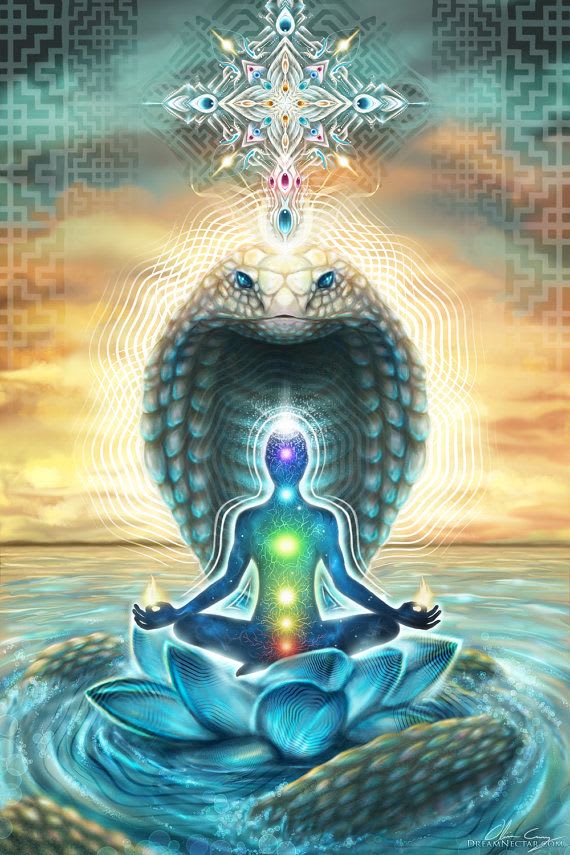 And all these so-called groups of yours are needed only so that you can somehow fill the gap between these two techniques.
And all these so-called groups of yours are needed only so that you can somehow fill the gap between these two techniques.
I don't know what happened to the group leader's ego after such a rebuke... But I confess that I myself love Osho's Kundalini technique very much and include it in almost all my groups and trainings. The fact is that this meditation, according to my own observations, in an absolutely amazing way integrates, structures and “sorts out” all those intense and sometimes difficult things that happened during the day. Moreover, integration and structuring do not occur at the level of "brains", but somewhere much, much deeper. Maybe in the body mind and at the level of the aura… Something like that.
So, meditation Osho Kundalini is most often done in the evening. This technique consists of four stages , each of which lasts for 15 minutes - exactly one hour in total.
In the same way as in the case of Dynamic Meditation , all stages of Osho Kundalini are best performed with closed eyes - in order to keep attention and energy inside and not dissipate them through "peeping" at other participants.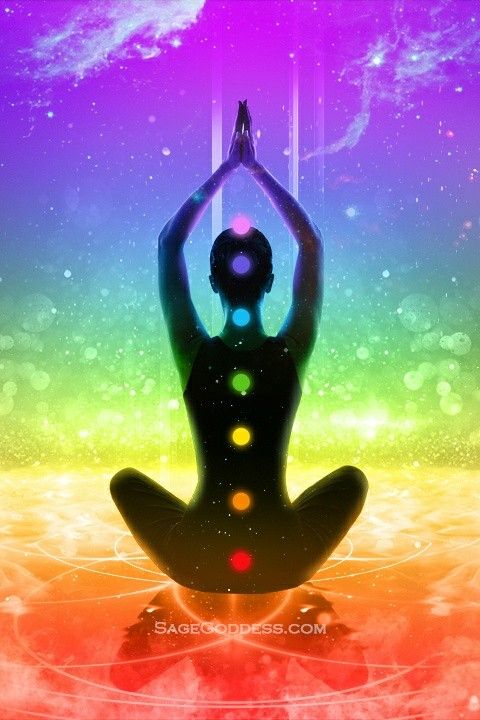
Before starting the technique, it is recommended to find the right place in the hall for yourself and prepare everything you need for sitting and lying down there, because in Osho Kundalini, the first and second stages are performed in a standing position, the third - sitting, and the fourth - lying. At least in its most common form.
Just like before “Dynamics”, before the very beginning of meditation Osho Kundalini it will be very useful to pay attention to your body – try to unblock your knees, relax your jaw, let go of your shoulders, neck, gluteal muscles… what else is there in the body already now can afford to relax? You can shake your legs, move your arms... Because the more relaxed your body is, the easier and more interesting the process of immersion in this meditation will become for you.
Well, everyone is finally ready, each participant stands in his place, everyone’s eyes are closed… The host turns on the music, and the first stage of meditation begins to the cheerful ringing of bells Osho Kundalini .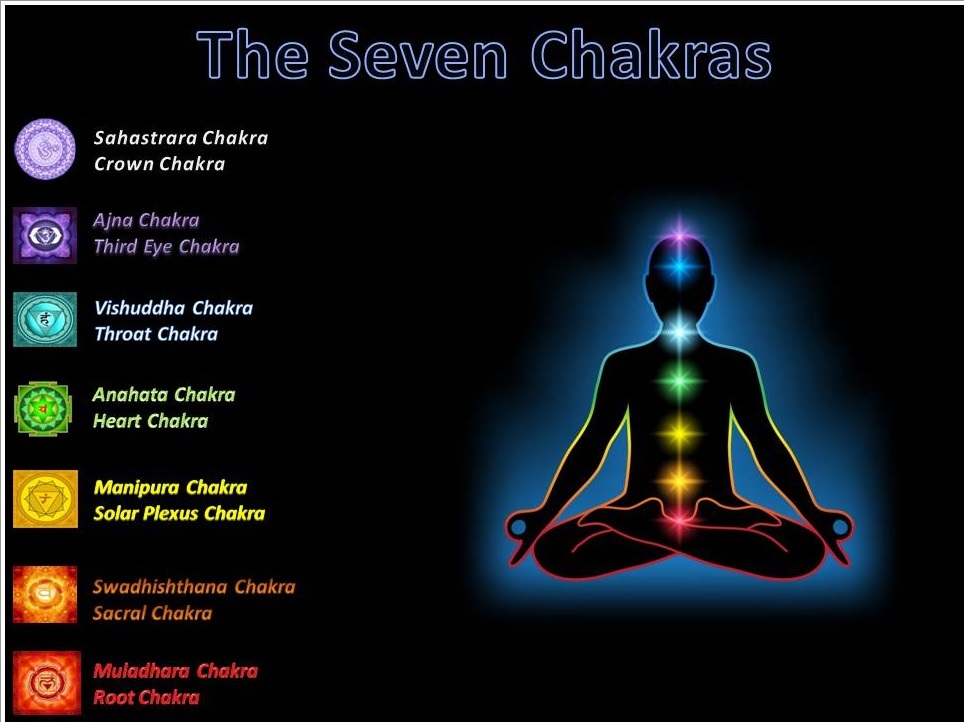
The first stage - "shaking"
Remaining as relaxed as possible, we begin to shake our whole body - easily and with pleasure. The main "trick" at this stage is not to "do" this shaking as a physical exercise, but to allow it to arise on its own and gradually take over the whole body. Sometimes this shaking originates somewhere in the legs, and for someone it can come from the depths of the abdomen - or from somewhere else. Be that as it may, we invite shaking, cooperate with it, support it, sometimes even provoke it - but we do not "make" it. This is a very subtle and very interesting distinction. And, by the way, music specially written for this technique contributes to this interaction very effectively.
And the deeper we manage to connect with the state of “not doing” shaking at this stage, the deeper it will be able to permeate our entire body, awakening, revitalizing and releasing in it a variety of energies and feelings that for some reason turned out to be blocked in the muscles and joints .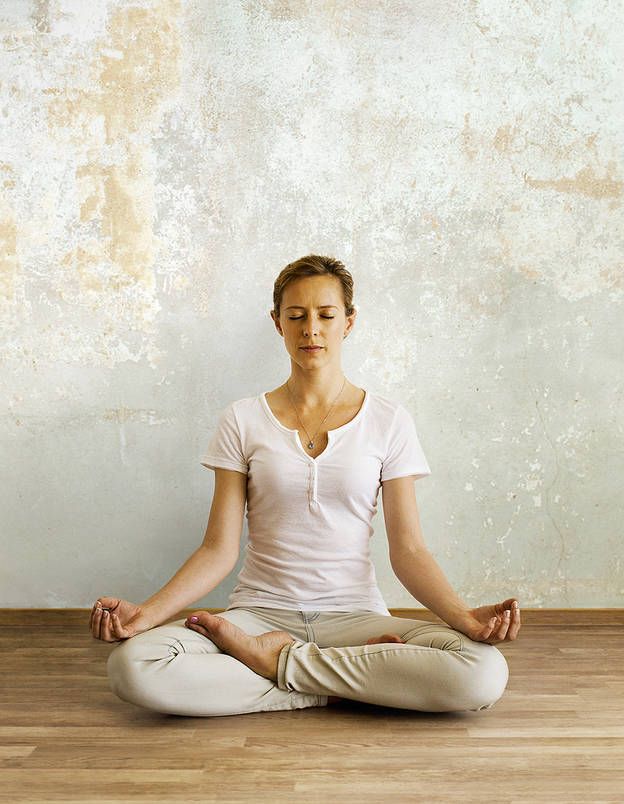 Moreover, when the shaking becomes spontaneous, this awakening process can take over not only the physical body, but also penetrate into subtler levels… Have you ever felt shaking at the level of the emotional body?..
Moreover, when the shaking becomes spontaneous, this awakening process can take over not only the physical body, but also penetrate into subtler levels… Have you ever felt shaking at the level of the emotional body?..
In general, one can only wonder what kind of energies will want to awaken inside you at the first stage. Maybe even the famous energy in esoteric circles kundalini , after which this meditation is named, will wake up ... And when the next stage begins, all these energies will be given a wonderful opportunity: to use your body to dance!
The second stage is the "dance"
Do you know that sannyasins are very fond of dancing? In Osho's space, dancing is present as an element of almost any meditation group and training - not to mention sannyas discos and parties or such "all dance" meditations as Nataraj , Chakra Rhythms or Osho Dance . Even in the course of such seemingly “completely non-dancing” events, such as a seminar on systemic constellations, or an Ericksonian hypnosis training, we always find time to dance a little - for example, during breaks or after some especially deep and difficult events.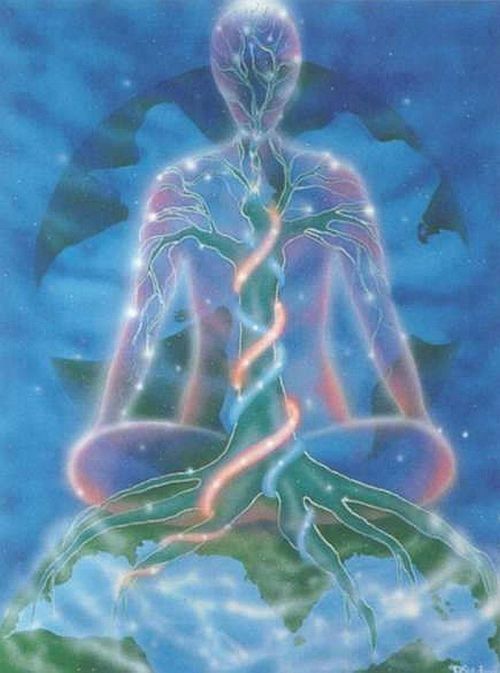
True, this is not at all the kind of dancing that one usually sees in "normal" people who are traditionally centered in the head. “Normal” people in our civilized society most often call dance the state in which the head lives its usual life: while dancing, a person can simultaneously chat with friends and girlfriends about some trifles or think about how he now looks in the eyes of others ... And the body at this time, somewhere down there, rhythmically twitches to the beat of the music ... Or, maybe, reproduces some learned movements ... But the head, of course, is not up to the body: there are so many interesting gossips that urgently need to be shared!
From the point of view of Osho sannyasins, dance is something else. Dancing is when you let go of your body and allow it to tune into the music. And at the same time, you are turning to any energies and any emotions that live within you, inviting them to come and begin to manifest through your body.
In other words, dance is the state when the body dances itself, when it uses music to help its living energies - and if you're lucky, your very being - to find expression through movement.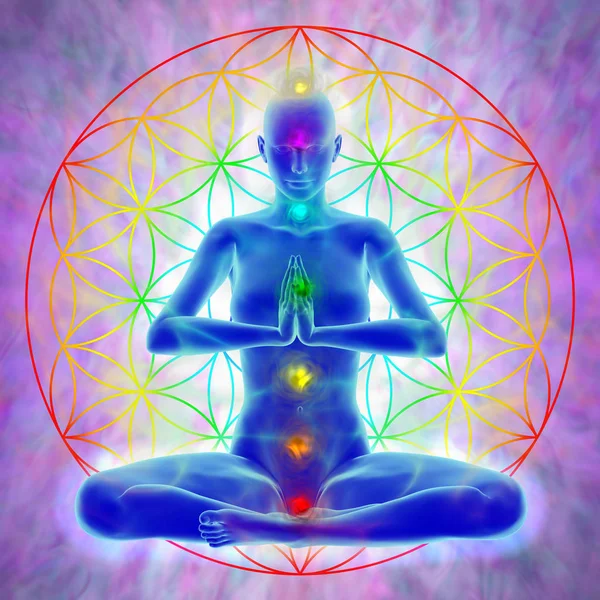 And at the same time, you can remain just a witness to what is happening - an observer who is only present and enjoys, appreciating nothing and interfering almost in nothing. This dance is not to impress others and amaze them with your skill as a dancer. It is the pure pleasure of expressing one's own energy, whatever that expression may be.
And at the same time, you can remain just a witness to what is happening - an observer who is only present and enjoys, appreciating nothing and interfering almost in nothing. This dance is not to impress others and amaze them with your skill as a dancer. It is the pure pleasure of expressing one's own energy, whatever that expression may be.
It turns out that for sannyasins dance is, firstly, a shift of attention and awareness from the head to the body; secondly, as far as possible, giving up active control of your body and allowing the movements to come and go on their own; and, thirdly, being present in one's own dance as an internal witness - but not a judge or a controller. I hope you recognize this description? Well, yes, this is simply a listing of the signs of active meditation. You can always turn your dance into meditation.
And going back to the Osho Kundalini technique, in the second stage you do exactly that: let go of your body, allow any energies awakened in the shaking stage to find resonance with the music and start dancing, using your body for your dance.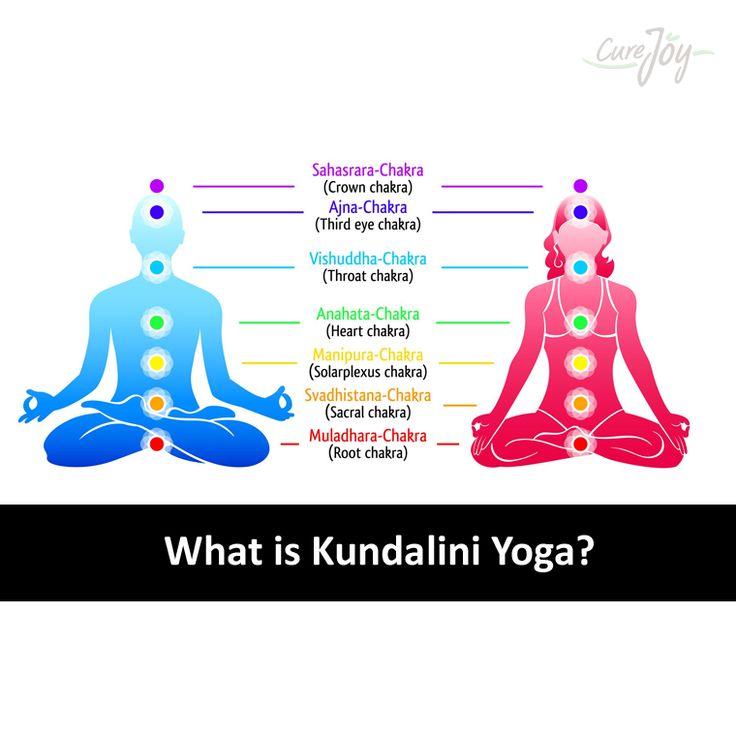 And at the same time, you transfer your attention from your head to your body and become a witness and participant in this dance. All in all, fifteen minutes of pure pleasure! No wonder William Blake said that "energy is eternal bliss." And the more energy, the more intensively it moves upwards, the more bliss!
And at the same time, you transfer your attention from your head to your body and become a witness and participant in this dance. All in all, fifteen minutes of pure pleasure! No wonder William Blake said that "energy is eternal bliss." And the more energy, the more intensively it moves upwards, the more bliss!
The third stage - "seeing sitting"
When the music of the second stage Osho Kundalini ends, calmly and very carefully, so as not to disturb the silence, go to the sitting position. If you are comfortable sitting on the mat, fine. If you feel more comfortable sitting in a chair, sit in a chair. Because the more comfortable you sit, the more likely your meditation will become deeper. It's great if your spine is vertical at the same time. If you've been opening your eyes to find your seat, now is the time to close them again.
And then, when the music for the third stage is played, move your attention from your head to your body and, remaining still, just watch.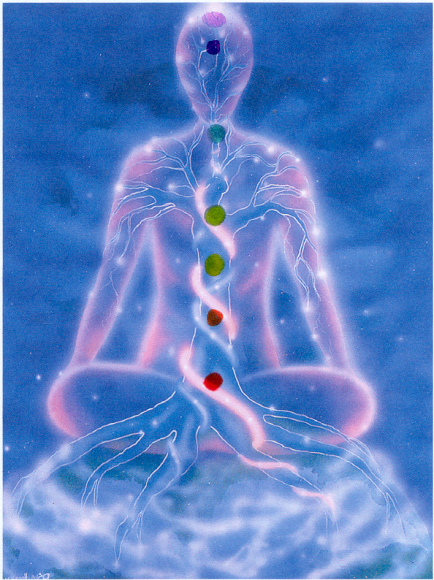 Observe everything that happens inside you and everything that happens outside: breathing, movement of energy, sensations in the body, stirring of thoughts… sounds and rustles… This is fifteen-minute vipassana — but to the music.
Observe everything that happens inside you and everything that happens outside: breathing, movement of energy, sensations in the body, stirring of thoughts… sounds and rustles… This is fifteen-minute vipassana — but to the music.
Feel your spine. All those energies that were awakened in the process of shaking and dancing in the second stage, now that your body has become completely still, will begin to focus inside the spine. It can feel like your entire body disappears and only your spine remains, a flexible, relaxed, luminous channel that connects earth to sky. A channel along which a variety of energies can flow… And that blissful riot of energy in the dance that you may have felt in the second stage can now begin to take on a new quality — the quality of depth, silence, calmness…
Fourth stage - "lying down observation"
Calmly and quietly move into the supine position. Remain still, in complete silence, with your eyes closed. Keep in touch with your "inner observer".
There is no music at this stage. In this silence, many important and subtle processes will surely take place inside you - but only a few of them will be noticeable at the level of consciousness. And after 15 minutes, a gong will sound - a signal for the end of meditation.
A few notes
The canonical description of Osho's Kundalini technique mentions several other variants of its execution. First, it says that during the shaking and dancing stages, your eyes may be slightly open. At the same time, one should not look at anything or anyone in particular - the look should remain scattered and unfocused. From my point of view, the obvious advantage of this option is that it will allow you to avoid bumping into other participants in case your dance suddenly becomes so wild and intense that your body wants to move around the hall. And a significant disadvantage is that attention is very easily switched from inside to outside, energy begins to dissipate through the eyes, the conscious mind is activated, suddenly receiving new “food”, and the focus on the body is also lost.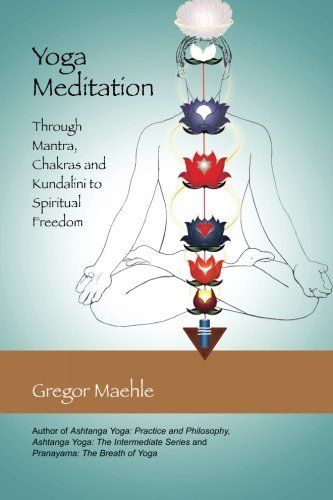
Secondly, there is a variant when in the third stage you do not sit down, but remain in a standing position. Similarly, in the fourth stage, you can choose not to lie down, but to continue observing in a sitting position. True, I can’t tell you anything about these options, because for some reason they never attracted me.
And in conclusion, I will say a few more words about the shaking that we "invite" at the first stage of meditation Osho Kundalini . It turns out that shaking is quite widely used in some spiritual and psychotherapeutic currents. There are corresponding exercises, for example, in some Qigong schools. Shaking and shivering are very important in bioenergetics Alexander Lowen . And Peter Levin , an American psychotherapist and recognized authority on the healing of mental trauma, in his books says that severe stress can block a significant amount of energy in the body - and this happens to both people and animals.